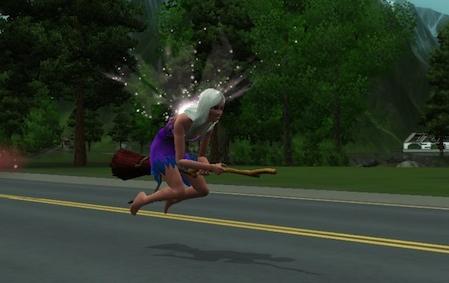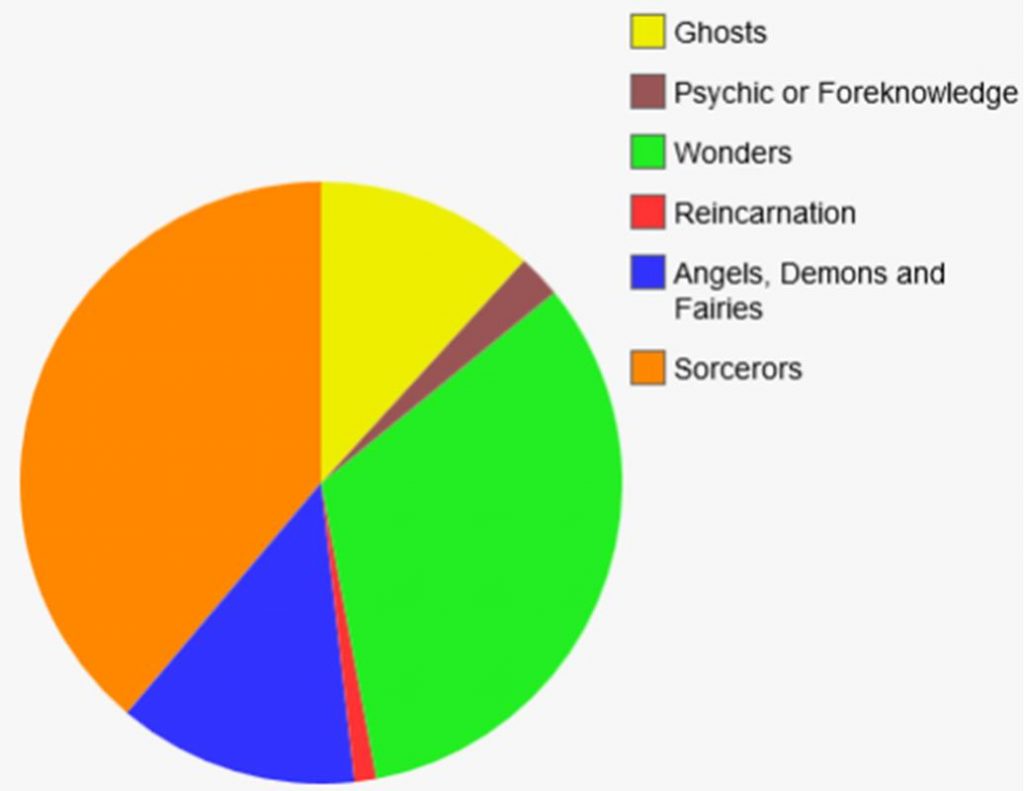Sampling the Supernatural April 25, 2017
Author: Beach Combing | in : Contemporary, Modern , trackbackAnyone who has ever studied the supernatural will know that the way we look at the impossible changes from generation to generation and from place to place. For example, in the nineteenth century in the UK and in the US ghosts often dragged chains, as they had since antiquity: today they do not. In the twentieth century in the same countries fairies had wings; in the seventeenth century they did not. These kinds of changes are relatively easy to tease out, if not so easy to demonstrate: you need a convincing database. But what about the more general changing interest in the supernatural. To take the two examples above: what are more popular in the seventeenth century fairies or ghosts? And in the eighteenth and in the nineteenth? Again, people who read a lot about this period would have a view but it would be impossible to say anything definitive, let alone prove it. Or would it?
Beach has spent the last couple of days very gently testing a hypothesis. Let’s start with an impossible ideal. The obvious way to test interest in the supernatural in 1700 and 1900 in, say, Britain would be to go and interview 10,000 men and women in that country in the two periods. This clearly is not an option. But what if we had a cache of letters from a hundred 1700ers and from a hundred 1900ers describing their views on the supernatural and their experiences of the same? Well, the sample would be small but there is no denying that this starts to be an interesting exercise. And where do we get these kinds of letters? Well, several magazines and newspapers have, over the generations, published supernatural letters from their readers. Perhaps this would give us a crude database? For example, in the 1920s Britain’s Daily News published reader’s letters on impossible experiences: why not use these?
Well, there are problems. First, published letters have already been through the editor’s hands: he presumably filtered many out. Second, the readership of a given newspaper also provides a basic filter on what will and what will not appear: generally speaking gentlemen read the Gentleman’s Magazine. But even given these problems, this seems a promising approach to measuring general interest in the supernatural: at least to give us a rule of thumb. What Beach needs to do is to find publications that can give sufficient samples. These would have to be (i) for Britain and Ireland or part of the same. They would have to be (ii) relatively easily available. There would have to be (iii) letters from readers in some form or other about the supernatural – letters on just ghosts, or just fairies or just prophecy don’t work, of course. Can anyone make any suggestions for titles: drbeachcombing AT yahoo DOT com. The easiest way around the methodological problems above would be to find two sample runs each for c. 1700; c. 1800 and c. 1900 and c. 2000, for a total of eight. There would be then a very basic control.
c.1700
c. 1900
In any case, bitten by the idea Beach carried out the exercise for one journal from c. 1700 and from another from c. 1900 and these were the results with c. 100 records for each. The single most interesting change is the decline in belief or interest in sorcery. C. 1700 witches may no longer have been hunted into the ground in Great Britain, but they clearly still worried the general population; whereas by 1900 that concern had practically melted away – in fact, one of the sorcerers from 1900 was a malevolent Indian fakir met by an official’s wife in the Raj! Ghosts take up much more space in 1900, but perhaps because they are one of the few acceptable forms of the supernatural left. Even today it would be much easier to tell a dinner party about meeting a ghost than about meeting fairies or a devil. The new form of the supernatural in 1900 is psychic experiences or experiences of foreknowledge, which have taken the place of ‘wonders’. They were there before, but lost in ghost and demon and fairy stories.
Prof Varnum writes, 28 Mar 2017: ‘Try google ngrams. You can get word frequencies from a 6 percent sample of books published in English for a span of a few centuries. Have used it in several peer reviewed pubs as have others.’
Beach replies: Regular readers will know that I have messed around with ngrams in the past for the supernatural (the results are fascinating). However, I suspect that N-gram is a particularly blunt tool for the supernatural. Two problems. First, the use of the supernatural in rhetorical tropes: e.g. Michael Ostling and Richard Forest, ‘Goblins, owles, and sprites’, Religion 44 (2014), 547-572. Second, the constantly changing vocabulary for the same thing: e.g. different words for ghosts from 1600-2000. Thanks to Prof Varnum!
29 May 2017, Filip G. writes, Rather than focusing on specific titles, I would try to search for (nearly) all such letters in a large archive of digitised newspapers. I would use obvious queries (“letter to the editor”) and not-so-obvious formulaic expressions (“I wish to say a few words”, “I am etc”) combined with all sorts of “supernatural” keywords.It would be easier if you had all the files at your fingertips (as I have for Polish, but, unfortunately, not for English), then the whole process could be nearly automated (start with some small “seed” of letters, extract good queries, get more letters, have even more queries, and so on). Even with intermediaries, such as The British Newspaper Archive, it could be achieved, though with more manual drudgery.
Thanks! Filip





